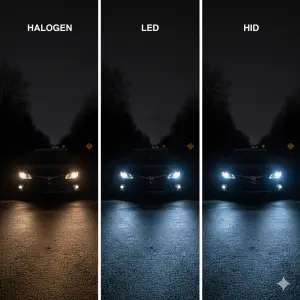Top 10 Headlight Maintenance Tips: Keep Your Headlights Clear, Bright, and Road-Ready
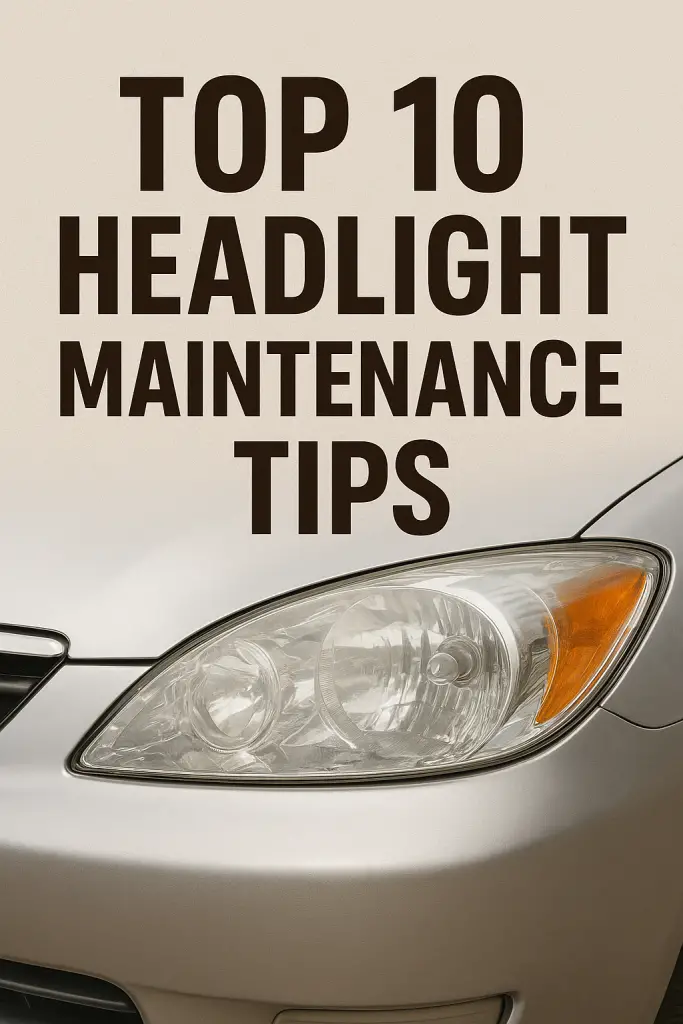
Discover the top 10 expert-recommended headlight maintenance tips everydriver should follow. Learn how to prevent oxidation, stop moisture buildup, maintain alignment, extend bulb life, and keep your headlights bright, clear, and safe for the road.
Introduction
Headlights are one of the most critical safety components of any vehicle. They provide forward visibility, alert other drivers to your presence, and ensure safe driving during low-light conditions or adverse weather. Yet, headlights are often neglected until they fail, become cloudy, or produce insufficient light. Over time, exposure to UV rays, temperature fluctuations, road debris, and moisture can reduce headlight efficiency by 30–80%. Dim or cloudy headlights increase stopping distance, reduce reaction time, and significantly raise the risk of nighttime accidents.
Proper headlight maintenance is cost-effective and prolongs both bulb and lens lifespan. Regardless of whether your vehicle uses halogen, HID (xenon), or LED lighting, the principles of care remain similar: keep lenses clean, prevent moisture intrusion, maintain alignment, and ensure stable electrical performance.
This article presents the Top 10 Headlight Maintenance Tips, designed with a professional, engineering-level perspective. Each tip includes the reasoning behind it, step-by-step guidance, and practical checklists to maximize safety, clarity, and headlight lifespan.
Why Headlight Maintenance Is Essential
Maintaining headlights isn’t just cosmetic; it’s essential for safety and efficiency. Over time, several factors can degrade performance:
- UV Damage: Prolonged exposure leads to oxidation and yellowing of polycarbonate lenses.
- Moisture Intrusion: Condensation inside headlights scatters light and corrodes internal components.
- Electrical Issues: Voltage drops or faulty wiring reduce bulb performance.
- Mechanical Misalignment: Improper beam direction decreases forward visibility.
Key benefits of regular maintenance:
- Safety: Clear headlights improve reaction time and reduce accident risk.
- Legal Compliance: Many countries require properly functioning headlights.
- Longevity: Preserves bulb and lens lifespan, reducing replacement costs.
- Performance: Maintains consistent light output for better visibility.
Top 10 Headlight Maintenance Tips
1. Clean Your Headlights Regularly to Prevent Oxidation
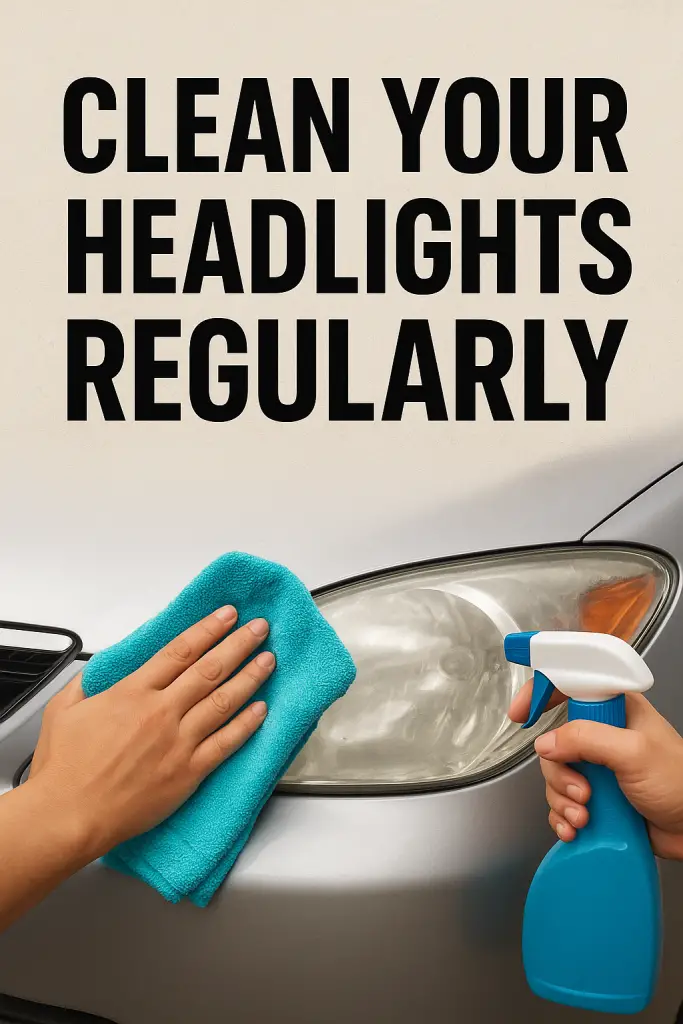
Polycarbonate lenses degrade over time due to UV exposure, pollution, and minor scratches. Oxidation leads to yellowing, haze, and reduced light output, often by 50–80%.
Steps to Clean:
- Wash headlights with pH-balanced automotive soap at least twice per month.
- Use a soft microfiber cloth to avoid scratching.
- Apply a UV-protective sealant after cleaning to delay oxidation.
- Avoid harsh household cleaners; they accelerate degradation.
Checklist:
- Clean lenses biweekly
- Inspect for micro-scratches
- Reapply UV sealant monthly
Benefits:
- Restores light clarity
- Delays lens aging
- Maintains beam intensity
2. Inspect for Moisture and Seal Condensation Leaks
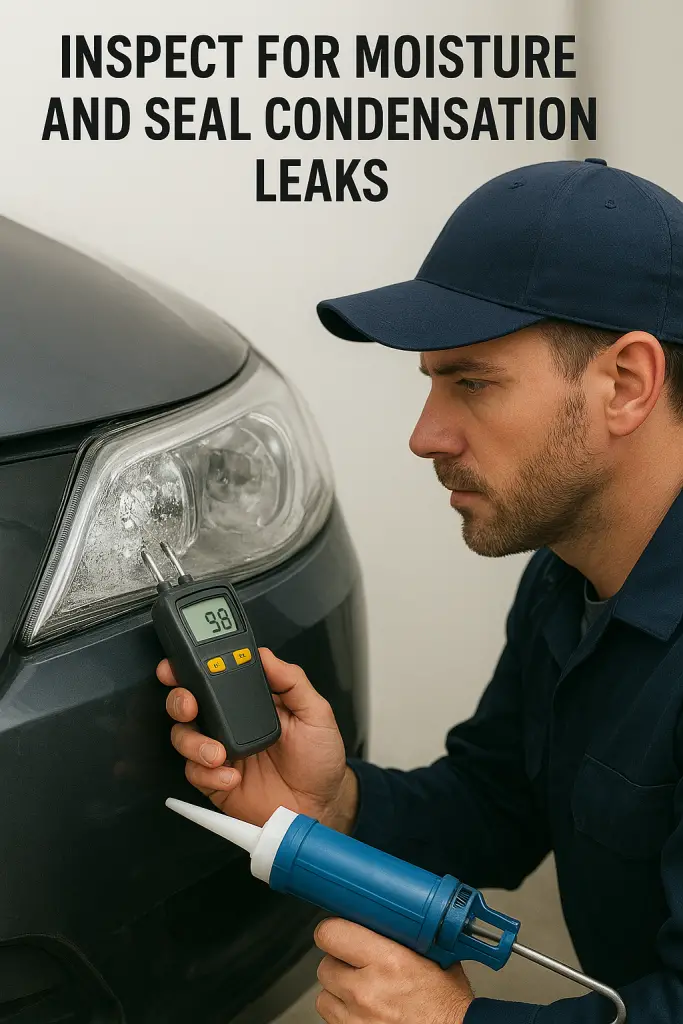
Moisture inside headlights reduces brightness, scatters light, and can corrode reflectors and electrical components. Common causes include cracked housings, worn seals, and blocked vents.
Steps:
- Inspect for condensation monthly.
- Check gaskets and seals for cracks or warping.
- Ensure bulb covers are fully closed.
- Verify vent ports are unobstructed.
Checklist:
- Dry any visible moisture
- Reseal or replace damaged gaskets
- Test headlights after maintenance
3. Replace Bulbs in Pairs
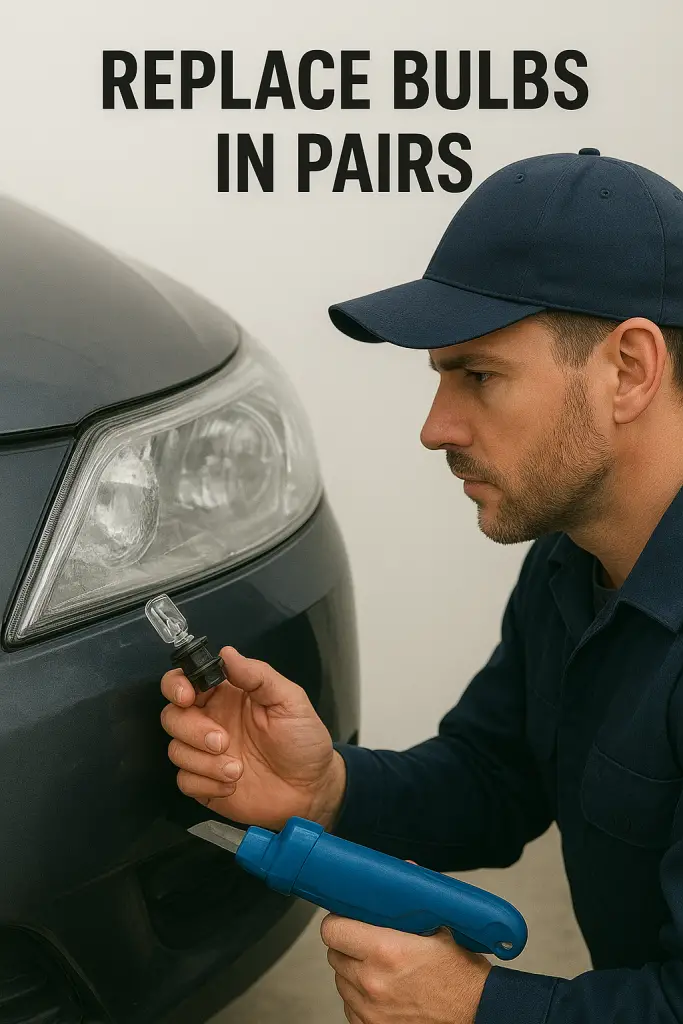
Bulbs degrade over time. Replacing only one bulb creates uneven light output, which can impair visibility and stress your eyes.
Steps:
- Always replace bulbs in pairs.
- Use OEM-specified wattage and type.
- Inspect sockets for corrosion.
Checklist:
- Track installation dates
- Test brightness before and after replacement
- Ensure matching beam color and intensity
4. Avoid Touching Halogen Bulbs With Bare Fingers
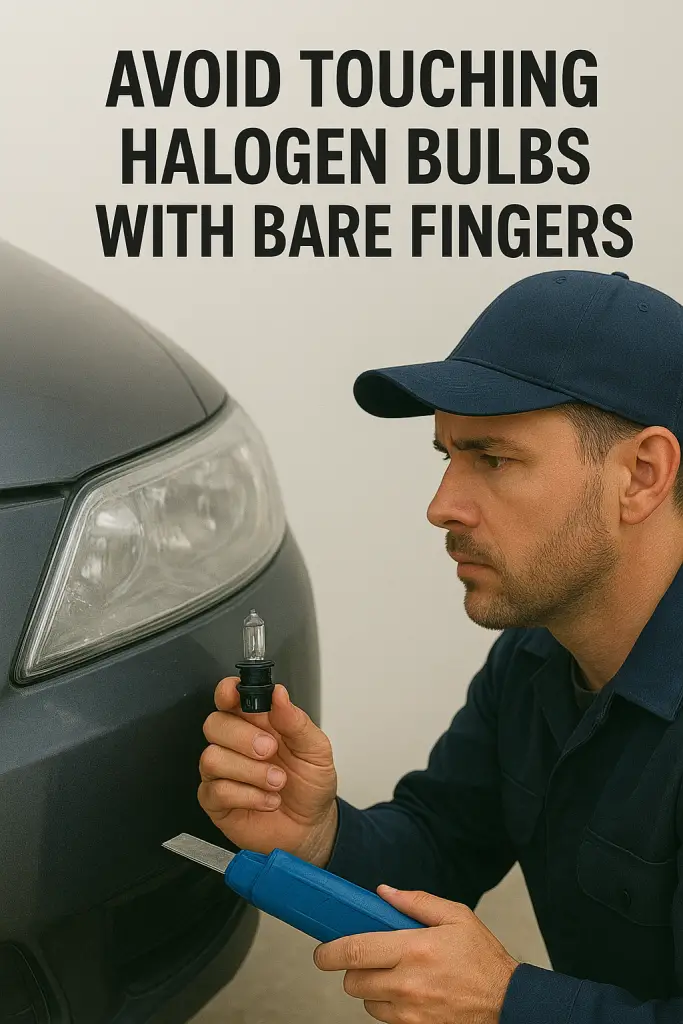
Oil from skin creates hot spots on the glass, causing premature failure or cracking.
Steps:
- Use gloves when handling bulbs.
- If touched, clean with isopropyl alcohol.
- Avoid direct contact with LED or HID bulbs as a best practice.
Checklist:
- Wear gloves for all replacements
- Verify bulbs are clean before installation
5. Check Headlight Alignment
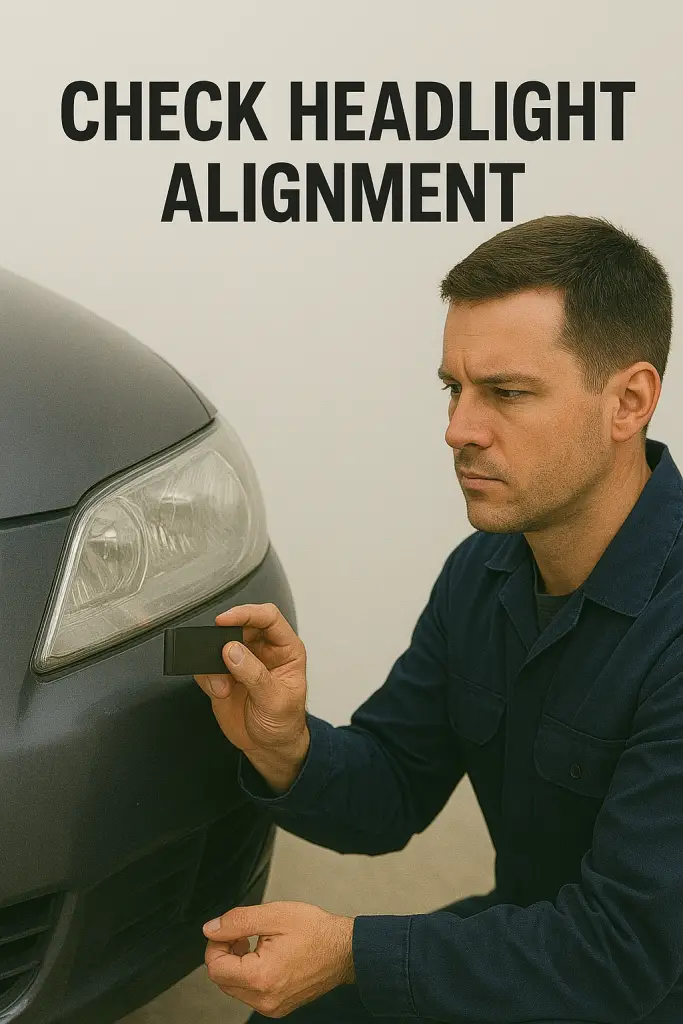
Misaligned headlights reduce forward illumination and can blind oncoming drivers. Causes include suspension wear, vibrations, and improper installation.
Steps:
- Test alignment every six months.
- Use wall or garage method to ensure proper angle.
- Re-aim after any bulb or housing replacement.
Checklist:
- Inspect for uneven lighting
- Adjust beam to manufacturer specifications
6. Apply UV-Resistant Coating
Factory UV coatings wear over time, exposing lenses to oxidation and yellowing.
Steps:
- Apply UV sealant every 2–3 months.
- Park in shade when possible.
- Avoid prolonged sun exposure.
Checklist:
- Inspect coating regularly
- Reapply after deep cleaning
7. Replace Aging or Fading Bulbs Proactively
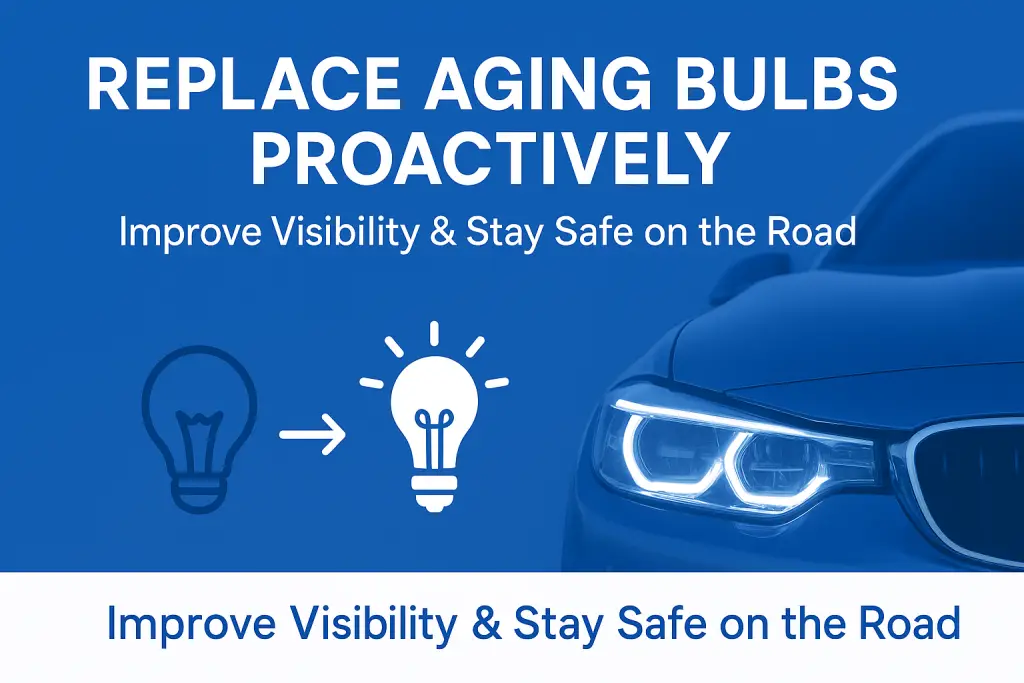
Light output gradually decreases even before failure, reducing visibility by 20–40%.
Steps:
- Replace bulbs before they burn out.
- Follow OEM guidelines for wattage and type.
- Keep records of installation dates.
Checklist:
- Inspect bulbs every 6–12 months
- Test brightness consistency
8. Maintain Electrical System
Voltage drops, corroded terminals, or failing relays can dim or flicker headlights.
Steps:
- Clean battery terminals twice a year.
- Inspect headlight grounding wires.
- Test voltage output if flickering occurs.
- Replace failing relays promptly.
Checklist:
- Inspect wiring annually
- Verify stable voltage output
- Document any anomalies
9. Clean the Inside of Headlight Housings
Dust or residue inside the housing reduces reflectivity and beam precision. Only serviceable units should be opened.
Steps:
- Inspect interior during bulb replacements.
- Use lint-free cloth to clean.
- Avoid scratching reflective surfaces.
Checklist:
- Inspect interior monthly
- Wipe carefully with microfiber cloth
- Check for water intrusion
10. Avoid Low-Quality Bulbs and Incorrect Wattage
Cheap bulbs often have poor beam patterns, overheat, or draw excessive current, damaging housing or wiring.
Steps:
- Use OEM-approved bulbs.
- Verify wattage and connector type.
- Avoid untested or cheap aftermarket bulbs.
Checklist:
- Confirm bulb specifications
- Test brightness before road use
Common Headlight Problems and How to Fix Them
| Problem | Cause | Solution |
| Oxidation | UV damage | Clean + UV seal |
| Flickering | Voltage drop | Inspect wiring |
| Dim Light | Aging bulb / haze | Replace bulb or restore lens |
| Moisture | Seal failure | Reseal assembly |
| Poor Beam | Misalignment | Re-aim headlights |
Headlight Maintenance Schedule
- Weekly: Visual inspection for cracks, condensation, dirt.
- Monthly: Clean lenses, check beam clarity, inspect for oxidation.
- Every 6 Months: Inspect alignment, clean terminals, inspect seals.
- Annually: Replace bulbs, apply UV protection, perform full inspection.
Headlight Maintenance Myths
- Toothpaste restores headlights permanently: Temporary effect; UV coating remains degraded.
- Higher-watt bulbs = better lighting: Can overheat wiring and housing.
- LEDs fit all housings: Beam patterns may scatter; check compatibility.
Frequently Asked Questions (FAQs)
Q1: How often should headlights be cleaned?
A1: At least twice per month or whenever they appear cloudy or dirty.
Q2: Why do headlights turn yellow?
A2: Oxidation of polycarbonate lenses due to UV exposure and environmental factors.
Q3: Is condensation inside headlights dangerous?
A3: Yes, it reduces brightness and can corrode electrical components.
Q4: When should bulbs be replaced?
A4: Proactively, before failure; usually every 1–2 years depending on type.
Q5: How do I stop headlights from fogging?
A5: Check seals, maintain vents, and ensure proper housing closure.
Q6: Can misalignment reduce visibility?
A6: Absolutely; misaligned beams reduce forward illumination and cause glare.
Q7: Do LEDs last longer than halogens?
A7: Typically, yes; but quality and heat management are critical.
Q8: Can I clean the inside of my headlight?
A8: Only if the housing is serviceable; use lint-free cloth and avoid reflective surfaces.
Q9: Why do headlights flicker sometimes?
A9: Voltage drops, corroded wiring, or faulty relays are common causes.
Q10: How do I prevent oxidation long-term?
A10: Clean regularly, apply UV protection, and avoid harsh chemicals or prolonged sun exposure.
Conclusion
Proper headlight maintenance is critical for safety, visibility, and vehicle longevity. By cleaning lenses, preventing moisture, maintaining alignment, using correct bulbs, and ensuring stable electrical performance, drivers can preserve maximum brightness and performance. A proactive maintenance schedule, combined with awareness of common problems and myths, will ensure headlights remain clear, safe, and reliable for years to come.


